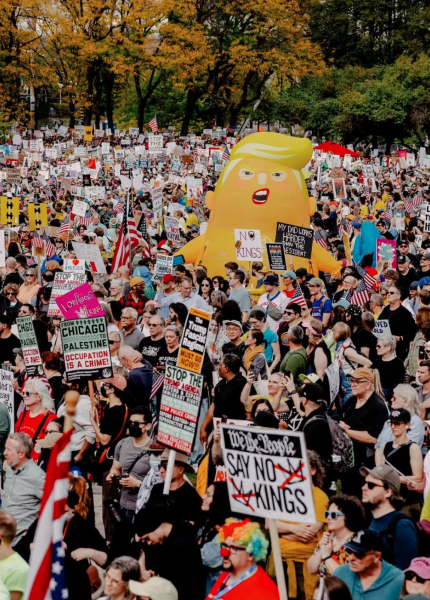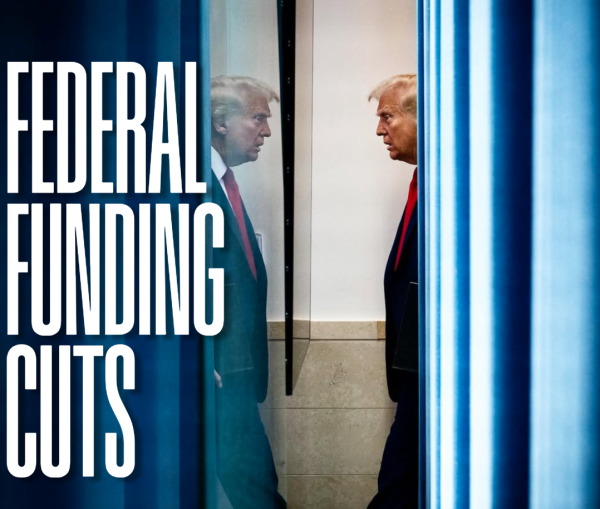Escalation in Iran Risks Chance for Peace
Tensions between the U.S. and Iran have been intensifying. The U.S. should learn from its past mistakes and stop pushing for regime change in that country.
On Jan. 3 of this year, Iranian General Qasem Soleimani was killed by an American airstrike at Baghdad International Airport in a military operation authorized by President Trump. Soleimani’s death led to an escalation in tensions between the two countries that culminated in a series of Iranian missile attacks on American troops in Iraq several days after Soleimani’s death, which resulted in zero American deaths.
The Trump administration’s justification for its killing of Soleimani has been disingenuous at best, as the administration has changed its reasoning for doing so several times. On the day of Soleimani’s death, Secretary of State Mike Pompeo justified Soleimani’s death by characterizing him as an “imminent” threat to American lives and stating that he “was actively plotting (attacks) in the region.” President Trump doubled down on that assertion later that day, stating that “Soleimani was plotting innocent and sinister attacks on American diplomats and military personnel.”
As the days went on, it became clear that the Trump administration was unable or unwilling to provide evidence for its characterization of Soleimani as an “imminent” threat. For example, on Jan. 9, Pompeo revealed that he did not know “precisely when and … precisely where” the supposedly “imminent attacks” were going to take place. As public pressure mounted for the Trump administration to provide evidence to support its claims about “imminent attacks,” President Trump asserted, without evidence, that Soleimani had been planning attacks on four American embassies. However, the next day, Defense Secretary Mark T. Esper contradicted that claim when he stated that he never saw any specific evidence that would suggest that Soleimani was planning to attack American embassies.
The Trump administration’s insincerity in its justification for killing Soleimani has reminded many people of the run-up to the Iraq War, during which the Bush administration often alleged that fact that Saddam Hussein allegedly had possession of weapons of mass destruction to justify the war, a war that many Americans now consider to have been a mistake.
Due to the similarities between the run-up to the Iraq War and the Trump administration’s recent statements about Iran, many Americans are now concerned that the Trump administration is trying to start an Iraq War-like conflict with Iran. However, according to Thomas Wright of The Brookings Institution, it is very unlikely that the United States will enter into a major military conflict with Iran, mainly because it would not serve the interests of either country.
Even if it is unlikely that the United States will soon enter into a war with Iran, the Trump administration continues to push for regime change in the country recklessly. In fact, this past week, Secretary of State Pompeo issued a veiled threat to the Iranian regime when he asserted that the Trump administration wants “Iran to … just be like Norway” in its actions, which will never happen unless there is regime change in Iran.
This administration’s constant advocacy for regime change in Iran is extremely dangerous, as we have seen the disastrous effects of American-led regime change in many countries throughout the world. The United States government has advocated for and even enacted regime change for decades now, typically leading to dire consequences for both the United States and the countries in which we have enacted regime change.
In fact, one could make the argument that our current precarious situation with Iran is a consequence of American-led regime change. In 1953, the CIA helped to orchestrate a coup d’état in Iran to oust the democratically elected government of then-Prime Minister Mohammad Mosaddegh. The United States then helped to install an American-friendly government in the country, led by the Shah. However, the Shah was deeply unpopular among the Iranian people. As a result, his government was overthrown during the Iranian Revolution in 1979, and the current Iranian government, led by the Supreme Leader, rose to power.
Another disastrous example of American-led regime change occurred in Libya in 2011 when the United States and its NATO allies invaded the country and overthrew its leader, Muammar Qaddafi. As a result of that intervention, many people now consider Libya to be a failed state as the current government has essentially no control over the country. Furthermore, according to Ross Kemp of The Guardian, there is now a “booming” slave trade of migrants in the country. For these reasons and others, former President Obama has referred to Libya as the “worst mistake” of his presidency.
If President Trump wants to avoid the mistakes of past presidents, his administration must stop advocating for regime change in Iran. A significant part of this president’s platform during his initial campaign for the presidency was ending American wars in the Middle East and bringing our troops home from that region. However, he seems to have abandoned that policy during his administration.
He continues to send more troops to the Middle East, including the 3,000 just deployed after that the strike on Soleimani, and he continues to engage in military conflicts throughout the region. Instead of spending trillions of dollars on pointless wars in the Middle East, the Trump administration should consider spending that money on more pressing matters, such as healthcare or infrastructure.








































































































































































































